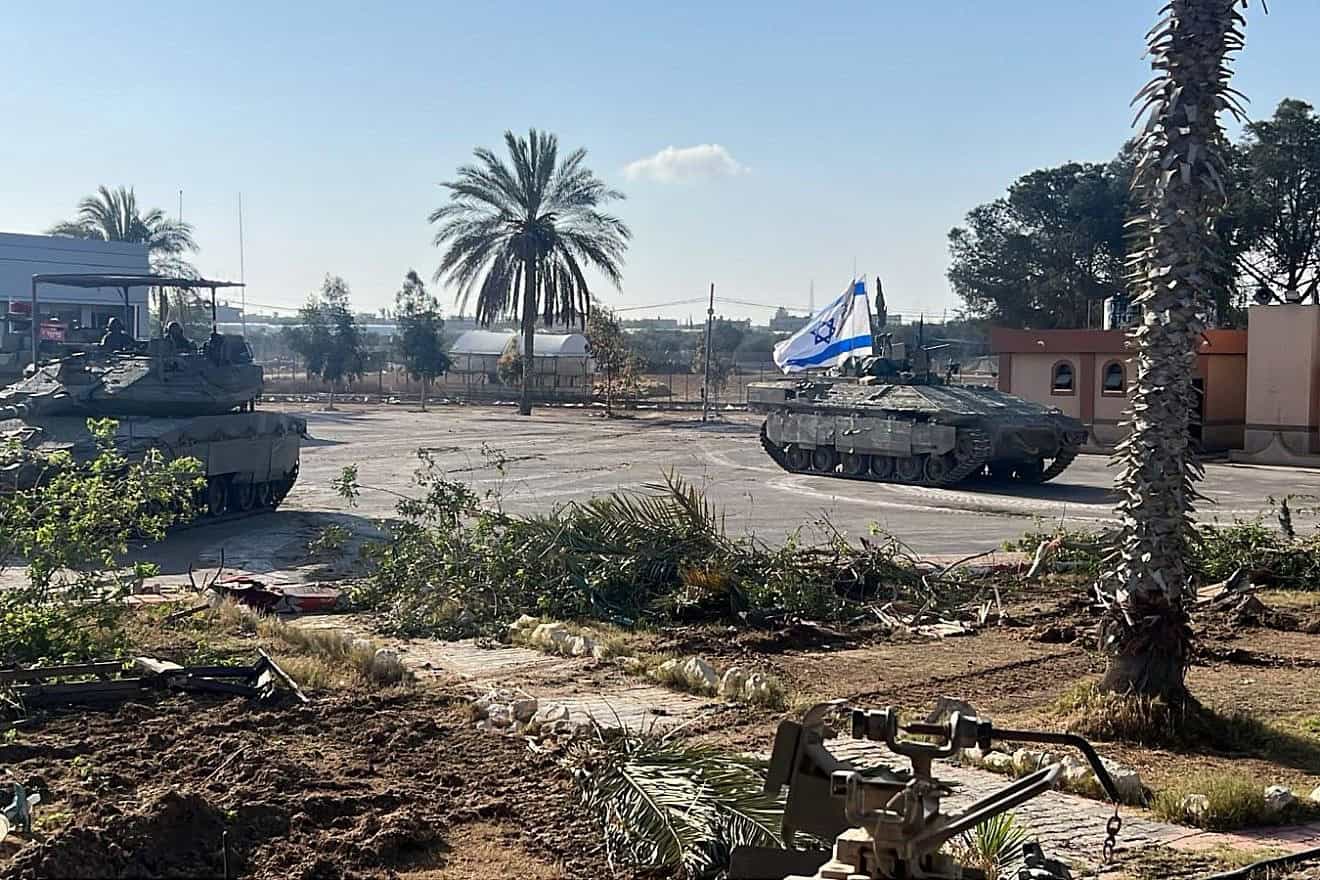by Yaakov Lappin
The move limits Hamas's smuggling efforts, and also demonstrates that Israel is not deterred by international pressure.
 |
Israeli tanks roll up to the Gaza side of the Rafah crossing on May 7, 2024. Credit: IDF. |
The decision by Israel’s War Cabinet to order the Israel Defense Forces to seize Rafah Crossing is strategically significant, as it will negatively impact Hamas’s ability to smuggle weapons and people back and forth from neighboring Sinai.
The crossing is part of the wider Philadelphi Corridor running along the Gaza-Egypt border, which has for years been a central supply line for Hamas smuggling.
The IDF’s entry into Rafah also puts pressure on Hamas’s leadership in the tunnels under the city, demonstrating that Israel is not deterred from entering this last Hamas stronghold despite the significant international pressure on Jerusalem.
As such, the move dramatically challenges Hamas’s months-long stalling tactics.
Hamas’s terrorist leadership has been using Gaza’s civilians and the Israeli hostages still in its hands, as well as international pressure and condemnation of Israel, to play for time and pressure Israel into an agreement that would amount to a devastating Israeli surrender. This would pave the path to Hamas’s retaking of Gaza and rebuilding of its terror army, turning the clock back to Oct. 6, 2023.
Instead, time is now running out for Hamas’s leadership, as Israel strips away the terror group’s human shields by evacuating them to several humanitarian zones (100,000 being evacuated from eastern Rafah to the Al-Mawasi humanitarian zone in the first phase, starting Monday).
At the same time, the IDF’s 162nd Division conducted a targeted operation against Hamas assets in the city, sending in armored units from the 401st Brigade together with Givati Brigade troops to take over the Rafah Crossing on the Gaza side, in eastern Rafah.
Hamas terrorists have been using this precise site to launch attacks, including Sunday’s deadly mortar barrage on Kerem Shalom, which killed four IDF soldiers and injured others.
The Israeli Air Force and the IDF Artillery Corps’ 215st Brigade preceded the ground assault with intensive strikes targeting Hamas military buildings, underground infrastructure and other locations, killing some 20 terrorists.
Ground forces have so far also found three operational tunnel entrances in the area.
As part of Israel’s efforts to avoid harming noncombatants, the IDF conducted prior coordination with the international organizations operating in the area, and asked them to join Gazan civilians in evacuating to Al-Mawasi.
According to IDF International Spokesperson Lt. Col. Nadav Shoshani, who spoke to journalists on Tuesday morning, at Al-Mawasi, “The IDF has facilitated the building of field hospitals, tents and an increase in water, food and medical supplies.” The vast majority of residents of the areas targeted by the IDF were evacuated prior to the beginning of the operation, he added.
“International organizations working in the area were also encouraged to temporarily evacuate prior to the beginning of the operation—and have done so,” Shoshani confirmed.
He added that following the IDF’s establishment of operational control of the crossing, special forces were engaged in sweeps of the area.
The four Hamas battalions in place in Rafah are no different from the 19 battalions Israel dismantled since the beginning of its ground offensive in Gaza on Oct. 27, according to Brig. Gen. (res.) Yossi Kuperwasser, former head of the Research and Assessment Division of IDF Military Intelligence and currently a senior researcher at the Jerusalem Center for Public Affairs.
However, he told JNS on Monday, the difference is that Egypt is in close proximity to Rafah, where many civilian aid agencies are also present.
Moreover, he said, “This is the last Hamas fortress. Hamas will likely try to defend it ferociously. There could be more terrorists in addition to the original four Hamas battalions.”
At the same time, Rafah will feature many of the same challenges that the IDF already overcame in Gaza City and Khan Yunis, such as underground terrorist infrastructure and a terrorist army entrenched in civilian areas.
Yaakov Lappin is an Israel-based military affairs correspondent and analyst. He is
the in-house analyst at the Miryam Institute; a research associate at
the Alma Research and Education Center; and a research associate at the
Begin-Sadat Center for Strategic Studies at Bar-Ilan University. He is a
frequent guest commentator on international television news networks,
including Sky News and i24 News. Lappin is the author of Virtual Caliphate: Exposing the Islamist State on the Internet. Follow him at: www.patreon.com/yaakovlappin.
Source: https://www.jns.org/in-seizing-rafah-crossing-israel-turns-tables-on-hamass-stalling-tactics/
No comments:
Post a Comment